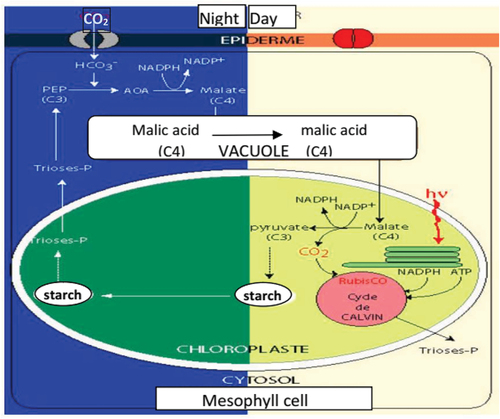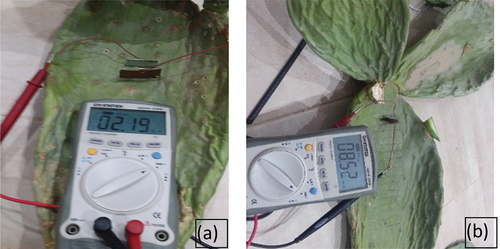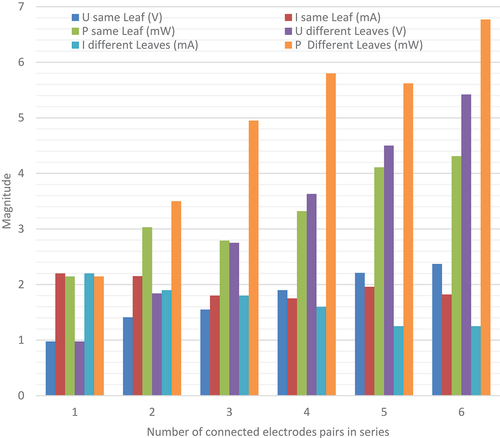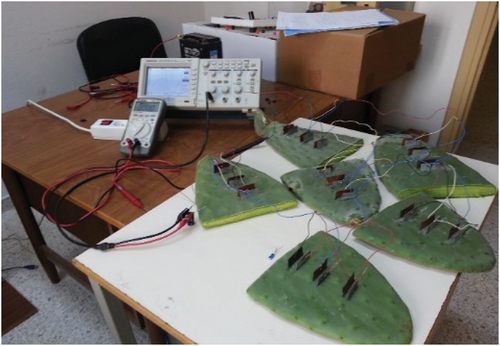Figures & data
Figure 2. The current and voltage harvested from the plant by varying the distance between copper and zinc (a) rectangular electrodes, (b) cylindrical electrodes.

Figure 4. The current and voltage harvested from the plant by varying the distance between copper and zinc cylindrical electrodes.
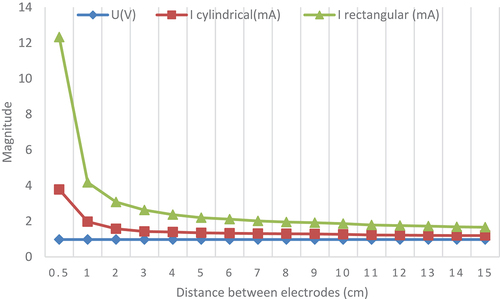
Figure 5. Current and voltage magnitude with depth variation of embedded rectangle and cylindrical electrodes pair.

Figure 7. Current and voltage magnitude with varying the number of couple electrodes embedded in parallel at the same leaf and at different leaves.
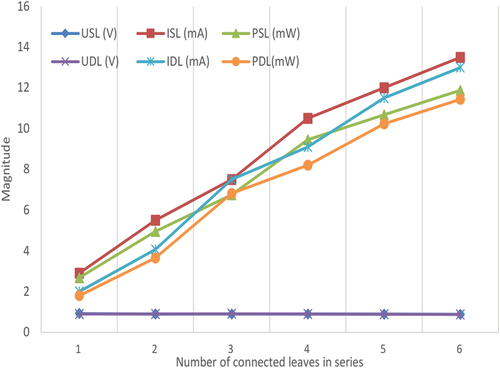
Figure 8. Three embedded electrodes pairs are connected in parallel in the same leaf where (a) leaves around same branche, (b) leaves aroud different branches are connected in series.
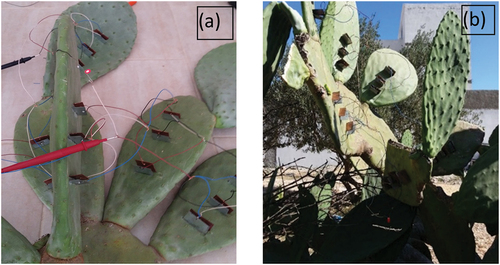
Figure 9. (a) leaves of the same branches are connected in series, (b) a calculator powered by the harvested energy from prickly pear plant.
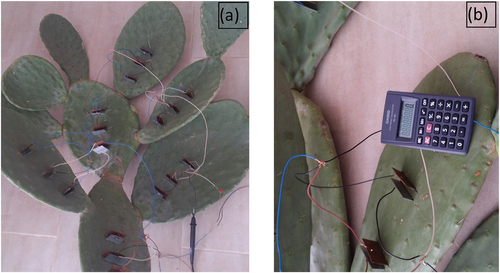
Figure 10. Current and voltage magnitude of 3 electrodes pairs connected in parallel at the same leaf which are connected in series at different leaves.
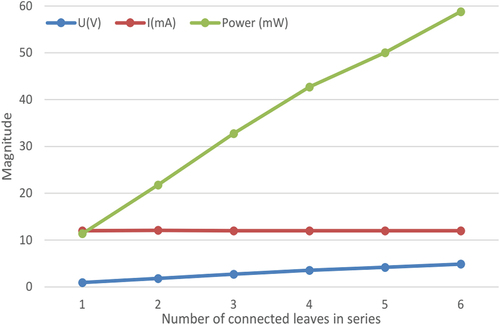
Figure 11. Harvested energy varying with time of prickly pear under load (a) Vivant plant, (b) Cut-Off plant.
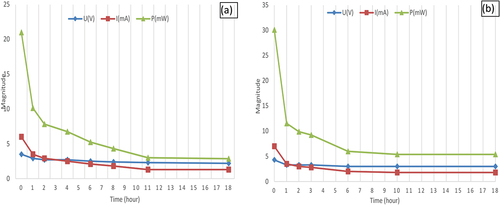
Figure 12. The equivalent circuit for series connection among leaves (a) from different branches, (b) around same branch, (c) from same branch. Where VL is V leaf, RL is R leaf and RB is R branch.

Figure 14. Recharging and discharging of capacitors (a) 330 µF, (b) 2200µ F and (c)3300µF) using harvested energy.

Table 1. Harvested energy with increasing the number of half-leaves connected in series where embedded 3 electrodes pairs.
Figure 15. (a) agave americana, (b) current value gathered from 3 immersed rectangular electrodes pairs connected in parallel at the agave plant.
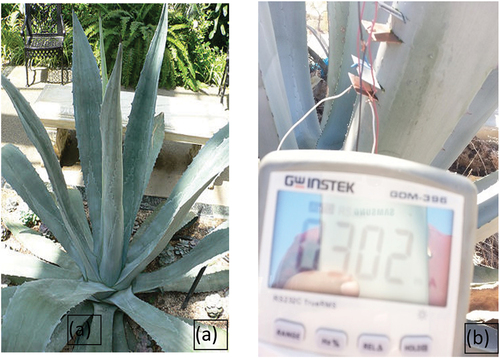
Table 2. Voltage and current magnitude using rectangular electrodes pairs embedded in series and in parallel at the agave americana plant.

